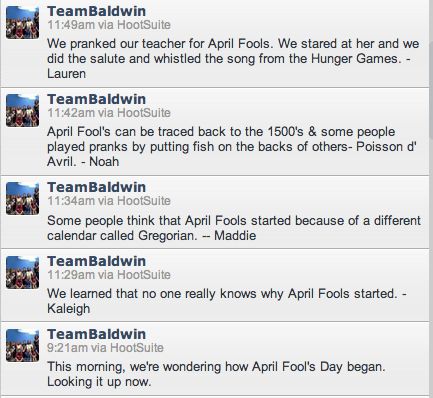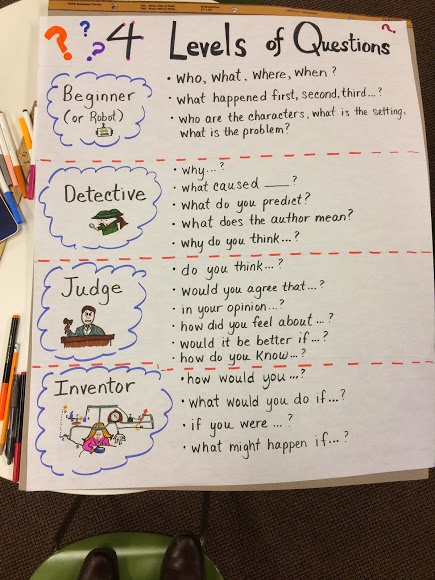As an educator, I’ve heard people discuss the “summer learning loss” since my first ed methods courses. For that matter, I remember adults talking about it when I was a kid, too. As a kid, I couldn’t figure out what they meant, because I learned all summer long… it just looked different than what it looked like in school.
If we look at learning as facts to be retained indefinitely, then summer learning loss is a concern.
However, if we realize that learning is fluid, that we often temporarily forget concepts, skills, and procedures when we don’t use them regularly, then summer learning loss shouldn’t be a huge concern. When we assume kids should all learn certain concepts by a certain age and then retain them forever, we do a disservice to those children – and it also means we don’t really understand LEARNING.
(How many of you remember every theorem you ever learned AND can use them right this minute with no review? How many of you took a second language and can still speak fluently if you rarely or never used that language again after you graduated?)
I’m worried about some of the articles and posts I’ve read recently about what kids need to be learning over the summer. Many of these posts contain lists that stress more drill including math facts and reading strategies, such as practicing affixes, etc.
“Hey, kids! Let’s have some fun today! We’re going to practice AFFIXES!” [cue kids cheering]
(I wish someone would hurry up and create that sarcasm font we’re all needing.)
Yes, let’s just make summer about killing the joy of learning, just like we have to do during the school year. (I use the word “we” here as a generality. I don’t think all of us have to do that during the school year, and I know for certain that our school, Anastasis Academy, is about bringing back the joy in learning. But that’s not the focus of this post.)
What if, during the summer, kids had the option to learn in a manner that is natural for them?
- running
- riding bikes
- swimming
- playing in the yard or park, running through sprinklers or around the fire hydrant
- pretending (we spent more time as kids playing Charlie’s Angels than anything else over the summer)
- neighborhood/street games with no adult intervention
Those 6 things help kids learn a MULTITUDE of important skills, including setting boundaries or rules for games, problem-solving, and being creative just to name a few. The physical activity alone is enough to warrant hours and hours allotted each day for these physical activities. Kids should NOT be sitting around all day, and most especially not during the summer! Sitting has shown to be incredibly harmful to our bodies.
For shorter periods of time during the day, kids should be allowed quiet time to read. The most important part of silent reading time is that the kids have choice to read what they want.
As an adult, when I walk into a bookstore or a library, I feel like a kid in a candy store. That’s because I LOVE TO READ. I love to read, because I had a LOT of choice as a kid. We went to the library often every summer. My mom didn’t force me to choose books that were at my lexile level, nor did she tell me I shouldn’t choose a book because it was too easy for me. It was always MY choice.
Over the last few years, I’ve noticed some of my students love to read fiction. Some love to read non-fiction. Some love to read magazines about animals. Some adore comic books. Some kids will read the boxes of anything in the room, if they’re allowed. (I remember reading every cereal box we had on the table at breakfast!)
If we want kids to read (and write) better, we need them to be reading MORE. Kids will read more when they’re interested in what they’re reading. The more choice we provide, the more likely they will want to read something different AND will eventually trust us when we do recommend something specific. Summer reading should be an extension of just that… allowing kids to choose what they want to read.
As for math facts and problem-solving skills, of course those things are going to fade over the summer. These are conceptual facts, not just something we memorize and ultimately understand. Kids need practice, but they need practice in context. Flash cards might help SOME kids memorize these facts, but why not provide something real for kids to do?
What if, instead of carving out an hour a day for drill practice, we asked kids to build something that required measuring, adding, subtracting, multiplying, or dividing? What if we baked or cooked together with kids? What if we gave them a box of craft materials or recyclables that are just going to be thrown out and asked them to invent something? What if we asked them to create a work of art, compose a song, or write and perform a play? All of these activities involve math concepts, among many others, even if those are not directly articulated to the kids.
Now stop and think about all the kids who may not have (safe) access to a library, a yard with grass or trees, or other neighborhood areas that are conducive to the type of play I mentioned above. Should they be limited to “drill and kill” activities? The majority of “summer learning loss” articles I’ve read say that children living in poverty need MORE drill and practice in academic-specific skills (usually math and reading/writing) over the summer. I disagree.
“Welcome to summer, James. You are already behind in school due to factors that are beyond your control, so let’s just make your summer seem like you’re in a prison, too. We’ll start by practicing your multiplication tables for the first hour, and then I’m going to ask you to read something you have absolutely no interest in for the next hour. After that, even though you’re probably already feeling like a zombie in the first 2 hours, we’ll continue to have you suffer through more drill and kill activities for the rest of the day. You’ll be SO ready for school in the fall!”
Again, I disagree whole-heartedly and believe that all children need safe and convenient access to play and pretend opportunities, with physical activity options and music and art. How do we ensure this happens for ALL kids?
KIDS NEED TO PLAY.** Period. They need to be silly, laugh, pretend, and they need to MOVE. When we dismiss the benefits of play for children, we do more damage to their eventual “academic” learning than we realize.
Alfie Kohn has already written more about this than I can even begin to attempt, but here’s a great example of his opinion on summer learning loss: Lowering the Temperature on Claims of “Summer Learning Loss.”
As a parent, I understand the worry that your child might be falling behind in school. Since my children have grown into adults, however, I regret that I worried too much about their academic progress when they were younger. I didn’t worry enough about their happiness, their physical activity, and their growth as complete individuals who would become happy and successful adults.
What do you REALLY want for kids?
*photo credit: CC licensed photo by Lotus Carroll, “Summer Essentials: Sprinkler Karate”
**Articles on benefits of play
- Benefits of Play
- The Importance of Play in Promoting Healthy Child Development and Maintaining Strong Parent-Child Bonds (American Academy of Pediatrics)
- Play and Children’s Learning (National Association for the Education of Young Children)









